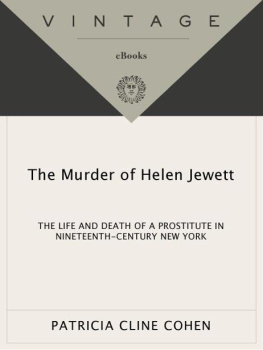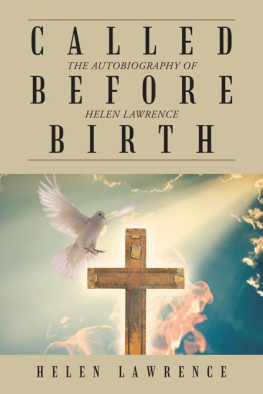Jewett Helen - The murder of Helen Jewett : the life and death of a prostitute in nineteenth-century New York
Here you can read online Jewett Helen - The murder of Helen Jewett : the life and death of a prostitute in nineteenth-century New York full text of the book (entire story) in english for free. Download pdf and epub, get meaning, cover and reviews about this ebook. City: New York, United States, United States., New York (State)--New York, year: 1999, publisher: Knopf Doubleday Publishing Group;Vintage Books, genre: Detective and thriller. Description of the work, (preface) as well as reviews are available. Best literature library LitArk.com created for fans of good reading and offers a wide selection of genres:
Romance novel
Science fiction
Adventure
Detective
Science
History
Home and family
Prose
Art
Politics
Computer
Non-fiction
Religion
Business
Children
Humor
Choose a favorite category and find really read worthwhile books. Enjoy immersion in the world of imagination, feel the emotions of the characters or learn something new for yourself, make an fascinating discovery.
- Book:The murder of Helen Jewett : the life and death of a prostitute in nineteenth-century New York
- Author:
- Publisher:Knopf Doubleday Publishing Group;Vintage Books
- Genre:
- Year:1999
- City:New York, United States, United States., New York (State)--New York
- Rating:3 / 5
- Favourites:Add to favourites
- Your mark:
The murder of Helen Jewett : the life and death of a prostitute in nineteenth-century New York: summary, description and annotation
We offer to read an annotation, description, summary or preface (depends on what the author of the book "The murder of Helen Jewett : the life and death of a prostitute in nineteenth-century New York" wrote himself). If you haven't found the necessary information about the book — write in the comments, we will try to find it.
Abstract: In 1836, the murder of a young prostitute made headlines in New York City and around the country, inaugurating a sex-and-death sensationalism in news reporting that haunts us today. Patricia Cline Cohen goes behind these first lurid accounts to reconstruct the story of the mysterious victim, Helen Jewett. From her beginnings as a servant girl in Maine, Helen Jewett refashioned herself, using four successive aliases, into a highly paid courtesan. She invented life stories for herself that helped her build a sympathetic clientele among New York Citys elite, and she further captivated her customers through her seductive letters, which mixed elements of traditional feminine demureness with sexual boldness. But she was to meet her match--and her nemesis--in a youth called Richard Robinson. He was one of an unprecedented number of young men who flooded into Americas burgeoning cities in the 1830s to satisfy the new business societys seemingly infinite need for clerks. The son of an established Connecticut family, he was intense, arrogant, and given to posturing. He became Helen Jewetts lover in a tempestuous affair and ten months later was arrested for her murder. He stood trial in a five-day courtroom drama that ended with his acquittal amid the cheers of hundreds of fellow clerks and other spectators. With no conviction for murder, nor closure of any sort, the case continued to tantalize the public, even though Richard Robinson disappeared from view. Through the Erie Canal, down the Ohio and the Mississippi, and by way of New Orleans, he reached the wilds of Texas and a new life under a new name. Through her meticulous and ingenious research, Patricia Cline Cohen traces his life there and the many twists and turns of the lingering mystery of the murder. Her stunning portrayals of Helen Jewett, Robinson, and their raffish, colorful nineteenth-century world make vivid a frenetic city life and sexual morality whose complexities, contradictions, and concerns resonate with those of our own time. From the Hardcover edition
Jewett Helen: author's other books
Who wrote The murder of Helen Jewett : the life and death of a prostitute in nineteenth-century New York? Find out the surname, the name of the author of the book and a list of all author's works by series.









